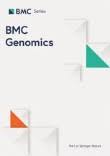Ver ítem
- xmlui.general.dspace_homeCentros e Institutos de InvestigaciónCICVyA. Centro de Investigación en Ciencias Veterinarias y AgronómicasInstituto de GenéticaArtículos científicosxmlui.ArtifactBrowser.ItemViewer.trail
- Inicio
- Centros e Institutos de Investigación
- CICVyA. Centro de Investigación en Ciencias Veterinarias y Agronómicas
- Instituto de Genética
- Artículos científicos
- Ver ítem
Identification of candidate genes associated with host-seeking behavior in the parasitoid wasp Diachasmimorpha longicaudata
Resumen
Background: Diachasmimorpha longicaudata is a hymenopteran fruit fly endoparasitoid. Females of this species find their hosts for oviposition by using complex sensorial mechanisms in response to physical and chemical stimuli associated with the host and host habitat. Ecological and behavioral aspects related to host-seeking behavior for oviposition have been extensively studied in D. longicaudata, including the identification of volatile organic compounds
[ver mas...]
Background: Diachasmimorpha longicaudata is a hymenopteran fruit fly endoparasitoid. Females of this species find their hosts for oviposition by using complex sensorial mechanisms in response to physical and chemical stimuli associated with the host and host habitat. Ecological and behavioral aspects related to host-seeking behavior for oviposition have been extensively studied in D. longicaudata, including the identification of volatile organic compounds acting as attractants to females. In this sense, molecular mechanisms of chemoreception have been explored in this species, including a preliminary characterization of odorant-binding proteins (OBPs), chemosensory proteins (CSPs) and odorant receptors (ORs), among other proteins. Functional assays on OBP and CSP have been conducted as a first approach to identify molecular mechanisms associated with the female host-seeking behavior for oviposition. The aims of the present study were to identify the D. longicaudata sensory gene repertoire expressed in the antenna of sexually mature and mated individuals of both sexes, and subsequently, characterize transcripts differentially expressed in the antennae of females to identify candidate genes associated with the female host-seeking behavior for oviposition.
Results: A total of 33,745 predicted protein-coding sequences were obtained from a de novo antennal transcriptome assembly. Ten sensory-related gene families were annotated as follows: 222 ORs, 44 ionotropic receptors (IRs), 25 gustatory receptors (GRs), 9 CSPs, 13 OBPs, 2 ammonium transporters (AMTs), 8 pickpocket (PPKs) receptors, 16 transient receptor potential (TRP) channels, 12 CD36/SNMPs and 3 Niemann-Pick type C2 like proteins (NPC2-like). The differential expression analysis revealed 237 and 151 transcripts up- and downregulated, respectively, between the female and male antennae. Ninety-seven differentially expressed transcripts corresponded to sensory-related genes including 88 transcripts being upregulated (87 ORs and one TRP) and nine downregulated (six ORs, two CSPs and one OBP) in females compared to males.
Conclusions: The sensory gene repertoire of D. longicaudata was similar to that of other taxonomically related parasitoid wasps. We identified a high number of ORs upregulated in the female antenna. These results may indicate that this gene family has a central role in the chemoreception of sexually mature females during the search for hosts and host habitats for reproductive purposes.
[Cerrar]

Autor
Wulff, Juan Pedro;
Traverso, Lucila M.;
Latorre Estivalis, Jose M.;
Segura, Diego Fernando;
Lanzavecchia, Silvia Beatriz;
Fuente
BMC Genomics 25 (1) : 147 (Febrero 2024)
Fecha
2024-02
Editorial
BioMed Central
ISSN
1471-2164
Formato
pdf
Tipo de documento
artículo
Palabras Claves
Derechos de acceso
Abierto
 Excepto donde se diga explicitamente, este item se publica bajo la siguiente descripción: Creative Commons Attribution-NonCommercial-ShareAlike 2.5 Unported (CC BY-NC-SA 2.5)
Excepto donde se diga explicitamente, este item se publica bajo la siguiente descripción: Creative Commons Attribution-NonCommercial-ShareAlike 2.5 Unported (CC BY-NC-SA 2.5)


